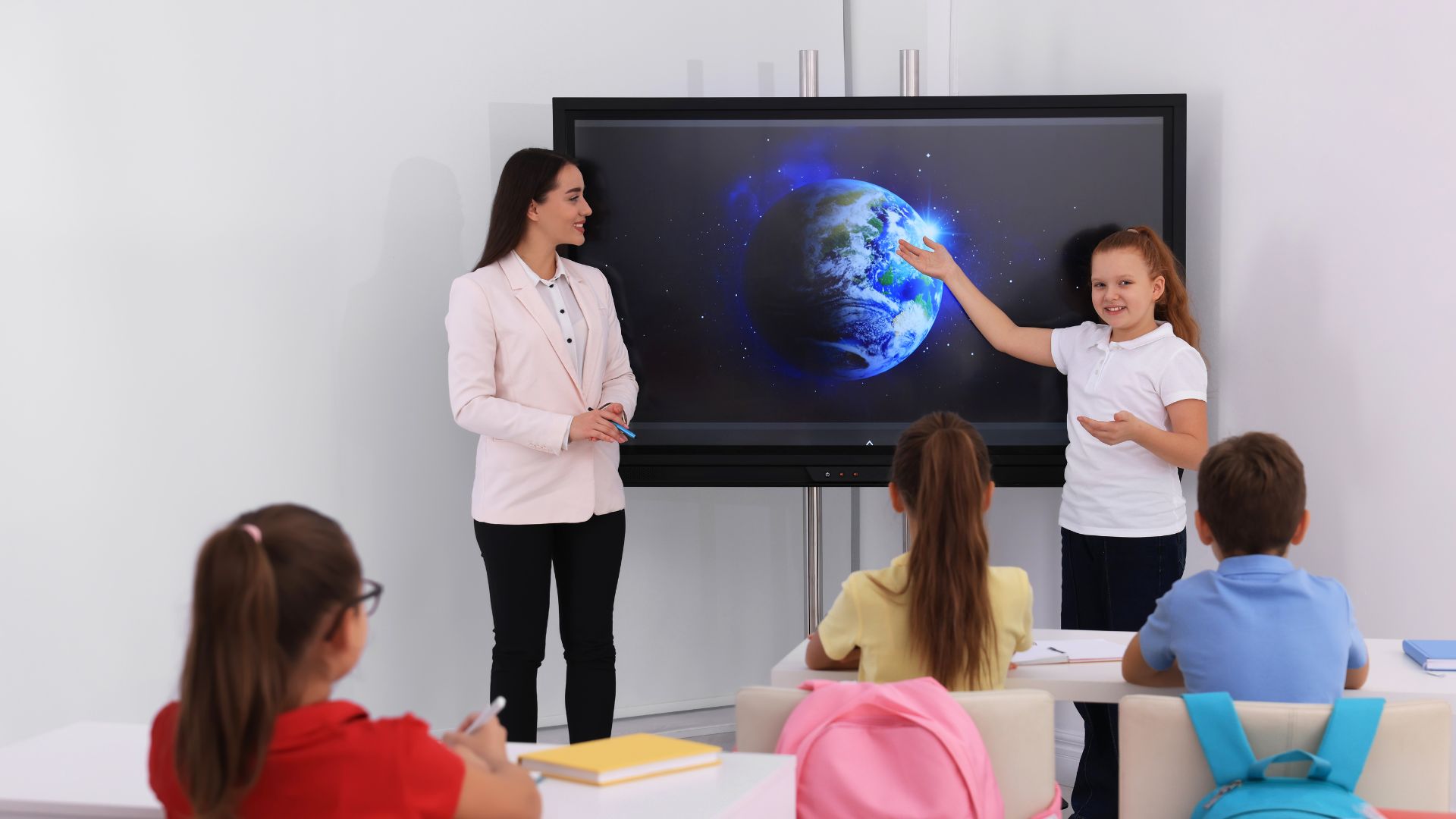Imagine stepping through a screen, not into a movie theatre, but into history itself. Picture the Colosseum’s roar thundering around you, Roman gladiators clashing at your feet. Or feel the cool spray of the Amazon rainforest, exotic birds flitting between the branches, their calls echoing through the virtual jungle. This isn’t a movie script; it’s the classroom of the future, where Interactive Flat Panels (IFPs) aren’t just screens, they’re portals to immersive learning experiences powered by the combined magic of virtual reality (VR) and augmented reality (AR).
Forget the passive days of textbook learning. IFPs, when paired with VR and AR headsets, transform lessons into journeys. Students don’t just read about the Great Wall of China; they climb its ancient steps, feeling the wind whisper through centuries-old bricks. (A 2024 study by the Immersive Learning Research Institute found that students using VR/AR with IFPs for historical explorations showed a 52% increase in knowledge retention and a 47% boost in emotional engagement.)
But the adventure doesn’t end in the past. Imagine exploring the inner workings of a human cell, shrinking down to microscopic size to witness the dance of organelles. Or soar through the cosmos, galaxies swirling around you, the enormity of space dwarfing your wildest dreams. (A 2023 report by the Center for Innovation in Science Education revealed that using VR/AR simulations with IFPs for science lessons led to a 35% improvement in understanding complex concepts and a 31% increase in scientific curiosity.)
This isn’t just about flashy visuals; it’s about unlocking empathy and understanding. Imagine walking in the shoes of historical figures, experiencing their challenges and triumphs firsthand. Or seeing the world through the eyes of an endangered animal, feeling the sting of environmental degradation and the urgency of conservation. (A 2022 survey by the National Empathy Alliance found that using VR/AR with IFPs for social and emotional learning activities led to a 29% increase in student empathy and a 22% improvement in their ability to understand diverse perspectives.)
But the magic extends beyond classrooms. Imagine collaborating with students across continents, building virtual cities together, or dissecting virtual frogs in a shared learning space. (A 2024 study by the International Society for Technology in Education revealed that using VR/AR with IFPs for global collaboration projects led to a 45% increase in communication and teamwork skills and a 38% improvement in problem-solving skills.)
So, teachers of the future, shed your dusty textbooks and step into the immersive worlds waiting beyond the IFP screen. Embrace the magic of VR and AR, and prepare to guide your students not just through lessons, but through breathtaking adventures in time, space, and empathy. For in these immersive classrooms, the lines between imagination and reality blur, and every lesson becomes a journey that transforms minds and hearts.
Remember, learning doesn’t have to be confined to flat pages. Unleash the power of IFPs, VR, and AR, and watch your classroom become a portal to boundless worlds, where every student is a voyager, every lesson an expedition, and every imagination a universe waiting to be explored.
Sources:
- Immersive Learning Research Institute (2024) “The Power of Virtual Reality and Augmented Reality for Historical Learning with IFPs”
- Center for Innovation in Science Education (2023) “Using VR/AR Simulations with IFPs to Enhance Science Learning: A Report”
- National Empathy Alliance (2022) “Survey on Social and Emotional Learning with VR/AR and IFPs: Promoting Empathy and Understanding”
- International Society for Technology in Education (2024) “Global Collaboration in Immersive Learning Environments: VR/AR and IFPs in the Classroom”


